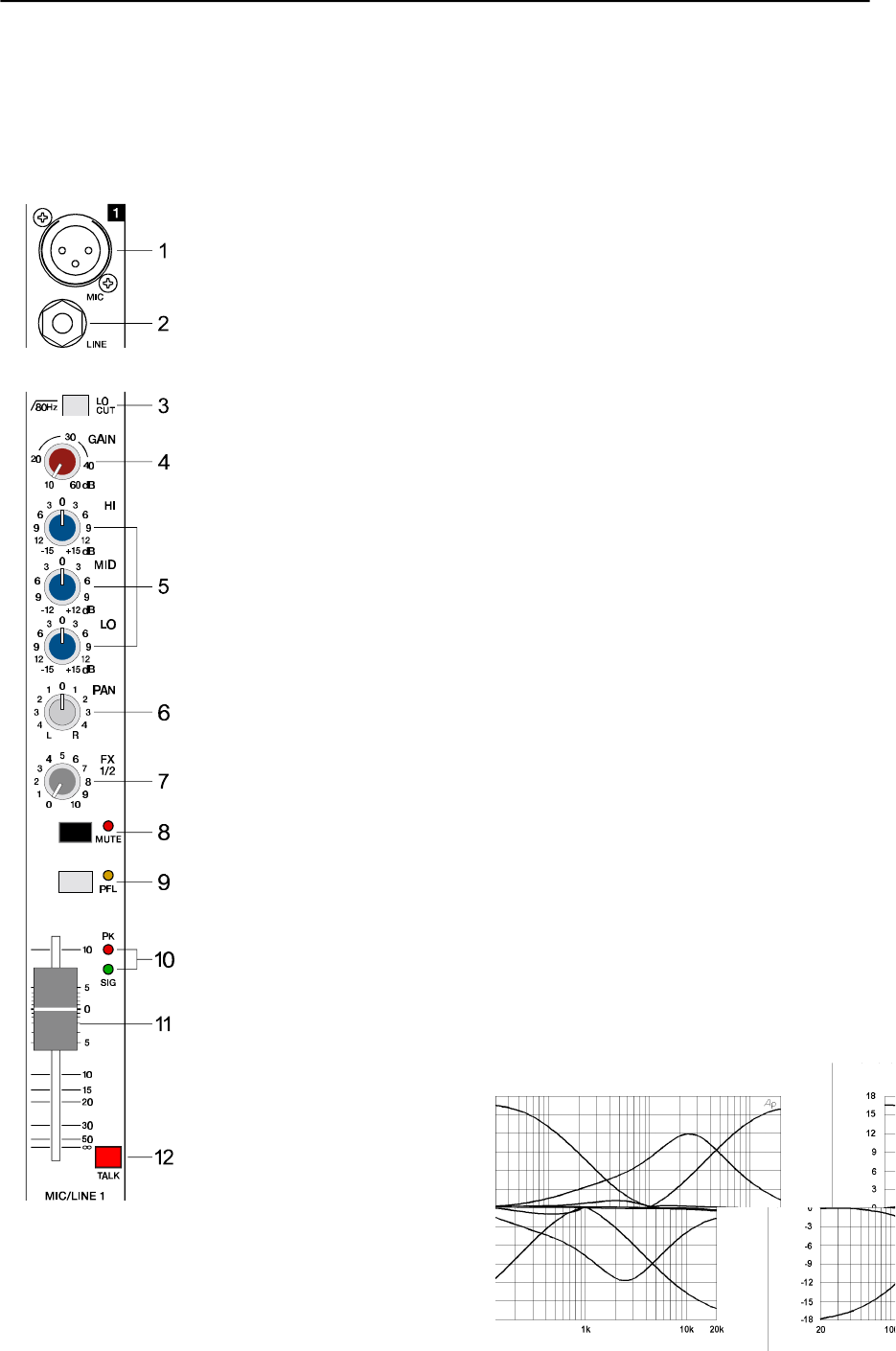
Another welcome side effect is, that the power amplifier and the connected loudspeaker
systems are not “polluted” by low-frequency interference “closing off” the sound system,
which certainly is not in yours or the audience’s interest. Your speaker systems will provide
you with a truly clear, natural, and powerful sound performance when using the Lo CUT
filter.
4. GAIN
Rotary control for adjusting the MIC or LINE inputs’ sensitivity, while optimally matching the
incoming signals to the mixer’s internal operation level. Cautious adjusting offers the benefits
of an improved S/N-ration and provides you with the full bandwidth of the MP7’s outstanding
sound capabilities. On the XLR-type connectors an amplification of +10dB is achieved when
the control is set all the way to the left and +60dB when the control is set to its maximum
position to the right. Especially when dealing with very low input levels, like they occur during
vocal recordings or when picking up distant sound sources, the high gain is extremely
profitable. Using the LINE-input, the signal is generally attenuated by -20 dB, while
maintaining the total adjustment range of 50dB. The LINE-input’s unity gain - no amplification
(0 dB) - is achieved at the 20dB mark. The following is meant as a short note for your
assistance on how to determine the correct input level.
Note on how to set the input level:
This is the basic channel setting, leaving you with at least 8dB of headroom. Which me-
ans, you have at least a range of 8dB before signal clipping. In case you intend to
make further adjustments to the channel’s EQ setting, you should perform steps 3. and
4. again afterwards, since changes in the sound shaping section also influence the
channel’s overall level.
5. EQ SECTION
The mixer’s EQ section allows very differentiated shaping of the incoming audio signal within
different frequency bands. Turning an EQ level control to the right enhances / amplifies the
corresponding frequency range while turning it to the left lowers / attenuates the signal of
that specific frequency band. Before altering to the sound, all EQ controls should be set to
their neutral position; i.e. their markers point straight up (detent position). If possible, do not
set the EQ controls to extreme positions. Usually, minor changes are totally sufficient and
produce the best results in the overall sound. You should use a natural sounding
reproduction as an orientation mark and rely on your musically trained ear, which still is one
of the best instruments for judging the sound quality. Try to avoid excessive enhancement
of the MID band. The moderate use of the MID control is the best remedy to avoid acoustical
feedback. Lowering the frequency
band’s level more or less will provide
you with high amplification rates wi-
thout feedback. Set the LO-EQ in ac-
cordance to your personal taste, for
instance to achieve the desired, volu-
minous vocal sound. Use the HI-EQ to
provide vocals with more crisp.
1. Set the gain control and the corresponding channel fader to their minimum setting.
2. Connect the desired sound source (microphone, musical instrument, ...) to the
corresponding MIC or LINE input.
3. Play the sound source at its highest volume setting; respectively, sing or speak as
loud as possible directly into the microphone.
4. While doing so, adjust the input level using the gain control, so that during the loudest
passages the PEAK LED is just not lit, but the SIGNAL-LED lights constantly
.
INPUT/MONO
27


















